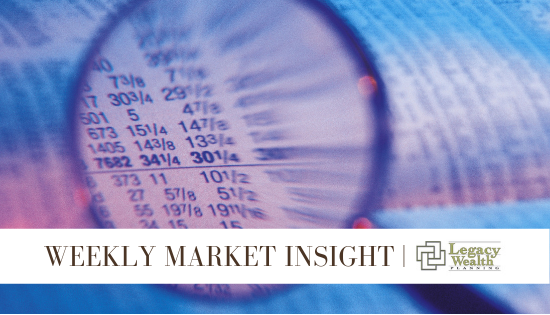
A closely watched point on the Treasury yield curve has fallen negative for the first time in this economic cycle.
As shown in the LPL Chart of the Day, Yield Curve Inversion Raises Economic Questions, the spread between the 2-year and 10-year Treasury yields fell as low as -2 basis points (-0.02%) in trading on August 14.
Typically, yield curve inversion, when long-term yields fall below short-term yields, is viewed as a signal of oncoming recession, although often with a relatively long lead. In the past five economic expansions, the U.S. economy has peaked an average of 21 months after the spread between the 2-year and 10-year yields initially turned negative.
U.S. Economy Remains on Solid Footing
Even though we’re discouraged by the yield curve’s shape right now, we see few signs of danger ahead. Data shows the U.S. economy is on solid footing, and corporate debt spreads have remain contained in this latest bout of volatility. Financial conditions are still historically loose, yet there are few signs of excess in the financial system. U.S. stocks have also been resilient against yield curve inversions in the past: Historically, the S&P 500 Index has rallied an average of 22% from the first inversion to the eventual economic peak.
“We’re not convinced that this yield curve inversion is a sign of imminent recession,” said LPL Research Chief Investment Strategist John Lynch. “The U.S. labor market is at full employment, healthy wage growth is fueling strong consumer activity, and corporate profits are at record levels.”
Global Perspective
Of course, recessions can be self-fulfilling prophecies of market sentiment, and we take that risk seriously. However, it’s a curious time for global fixed income right now, and Treasury yields have been weighed down by intense global buying pressure amid ultra-low sovereign debt yields elsewhere. Because of this, we think the yield curve’s shape has been driven more by technical factors than domestic economic weakness.
Monetary Policy Remains Too Tight
This yield curve inversion sends an important signal to Federal Reserve (Fed) policymakers. U.S. monetary policy is clearly still too tight, even after last month’s 25 basis point (0.25%) rate cut, given trade uncertainty and signs of slowing global growth. The Fed has promised flexibility, and we expect policymakers to enact one or two more cuts by the end of the year. Without an easier Fed, the U.S. dollar may stay elevated and global buying pressure will continue in Treasuries.
What’s Next?
We will continue to monitor the yield curve and incoming economic data. For now, we think the current U.S. economic expansion, now in its 11th year, has more room to run.
IMPORTANT DISCLOSURES
Please see the Midyear Outlook 2019: FUNDAMENTAL: How to Focus on What Really Matters in the Markets for additional description and disclosure.
The opinions voiced in this material are for general information only and are not intended to provide specific advice or recommendations for any individual security. To determine which investment(s) may be appropriate for you, consult your financial advisor prior to investing. The economic forecasts set forth in this material may not develop as predicted.
All indexes are unmanaged and cannot be invested into directly. Unmanaged index returns do not reflect fees, expenses, or sales charges. Index performance is not indicative of the performance of any investment. All performance referenced is historical and is no guarantee of future results.
Investing involves risks including possible loss of principal. No investment strategy or risk management technique can guarantee return or eliminate risk in all market environments.
Rebalancing a portfolio may cause investors to incur tax liabilities and/or transaction costs and does not assure a profit or protect against a loss. There is no guarantee that a diversified portfolio will enhance overall returns or outperform a non-diversified portfolio. Diversification does not protect against market risk.
All company names noted herein are for educational purposes only and not an indication of trading intent or a solicitation of their products or services. LPL Financial doesn’t provide research on individual equities.
This Research material was prepared by LPL Financial, LLC.
Securities and advisory services offered through LPL Financial (LPL), a registered investment advisor and broker-dealer (Member FINRA/SIPC). Insurance products are offered through LPL or its licensed affiliates. To the extent you are receiving investment advice from a separately registered independent investment advisor, please note that LPL is not an affiliate of and makes no representation with respect to such entity.
If your advisor is located at a bank or credit union, please note that the bank/credit union is not registered as a broker-dealer or investment advisor. Registered representatives of LPL may also be employees of the bank/credit union. These products and services are being offered through LPL or its affiliates, which are separate entities from, and not affiliates of, the bank/credit union. Securities and insurance offered through LPL or its affiliates are:
| Not FDIC or NCUA/NCUSIF Insured | No Bank or Credit Union Guarantee | May Lose Value | Not Guaranteed by Any Government Agency | Not a Bank/Credit Union Deposit |
For Public Use | Tracking # 1-882922